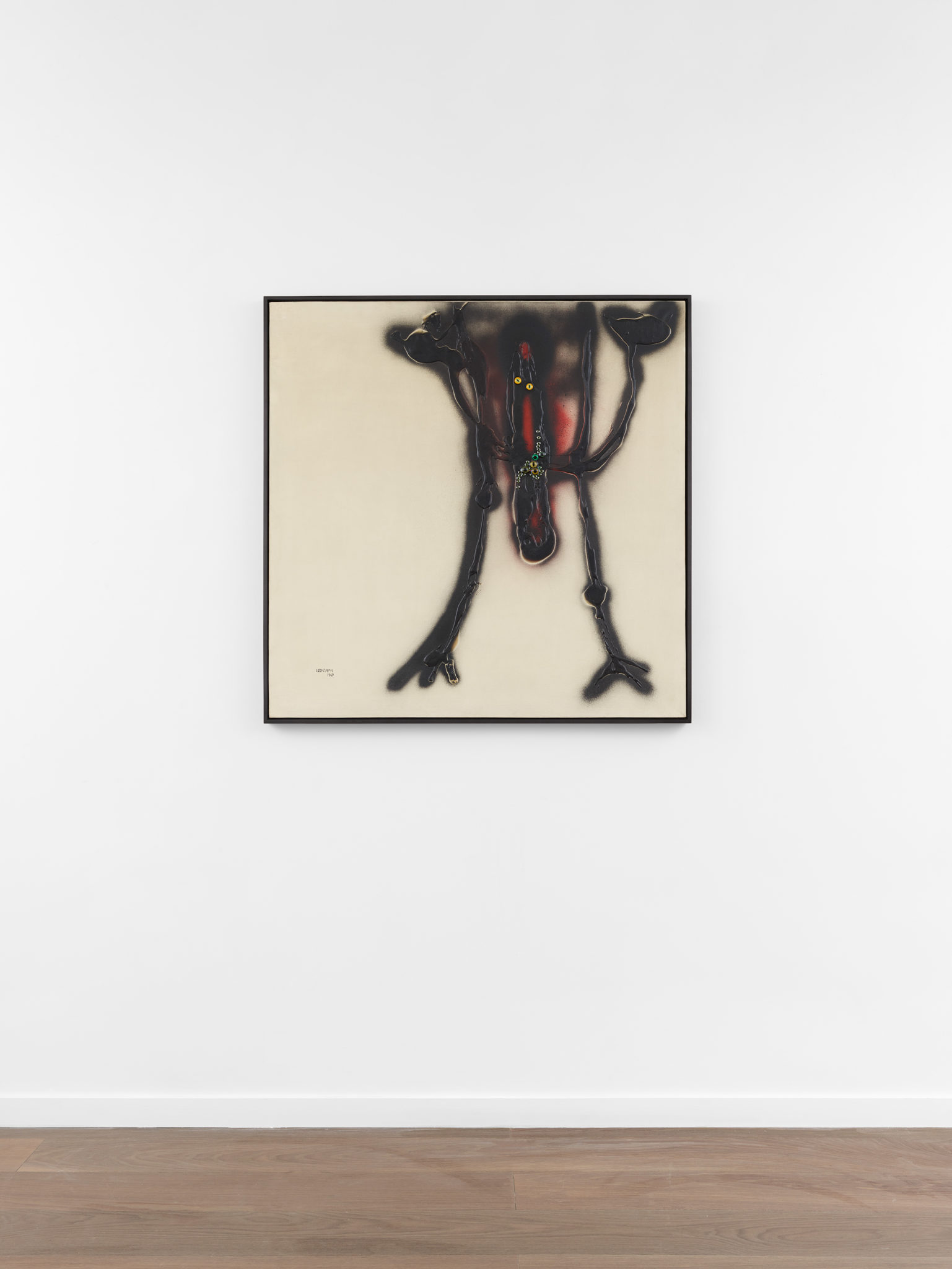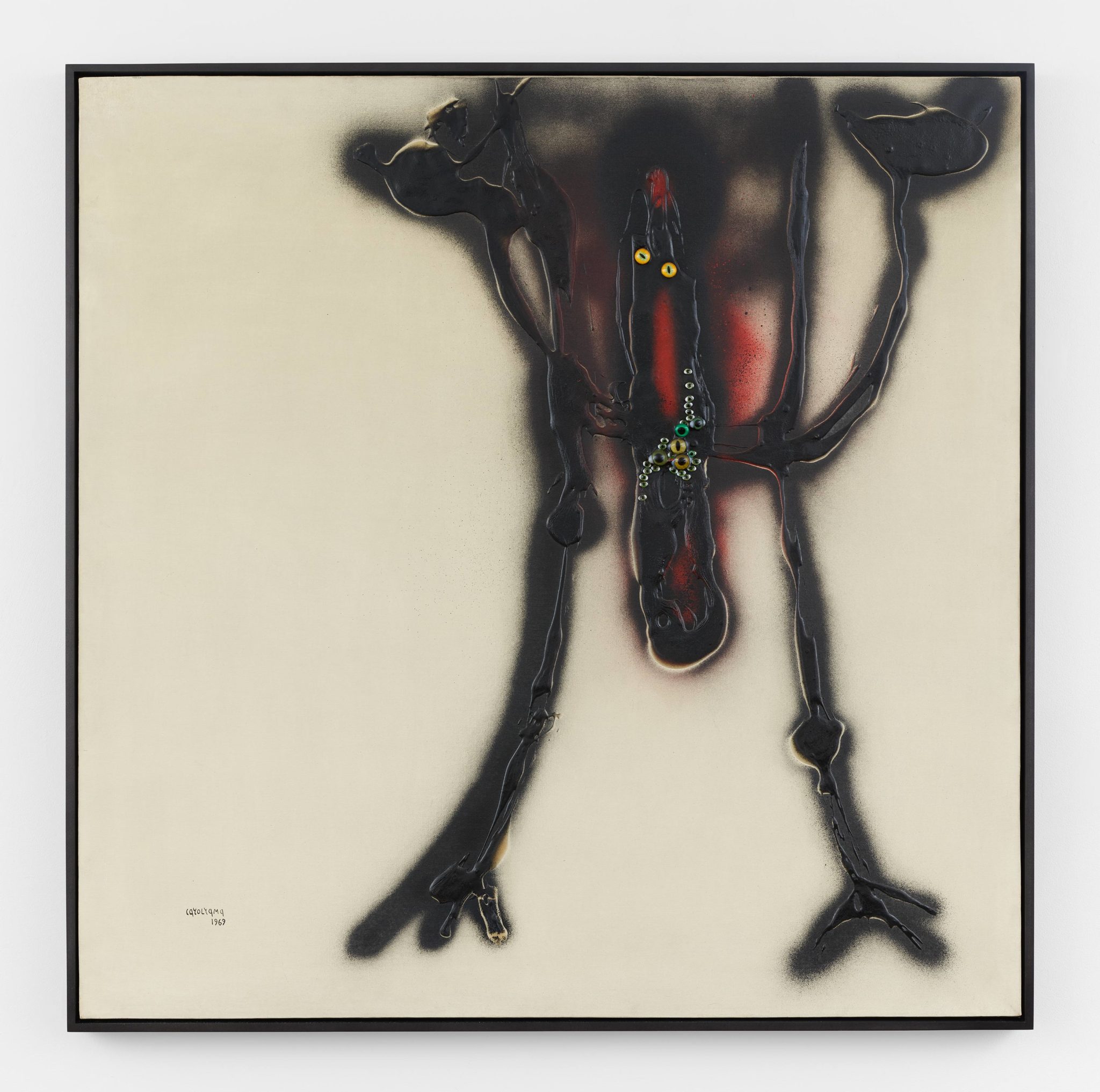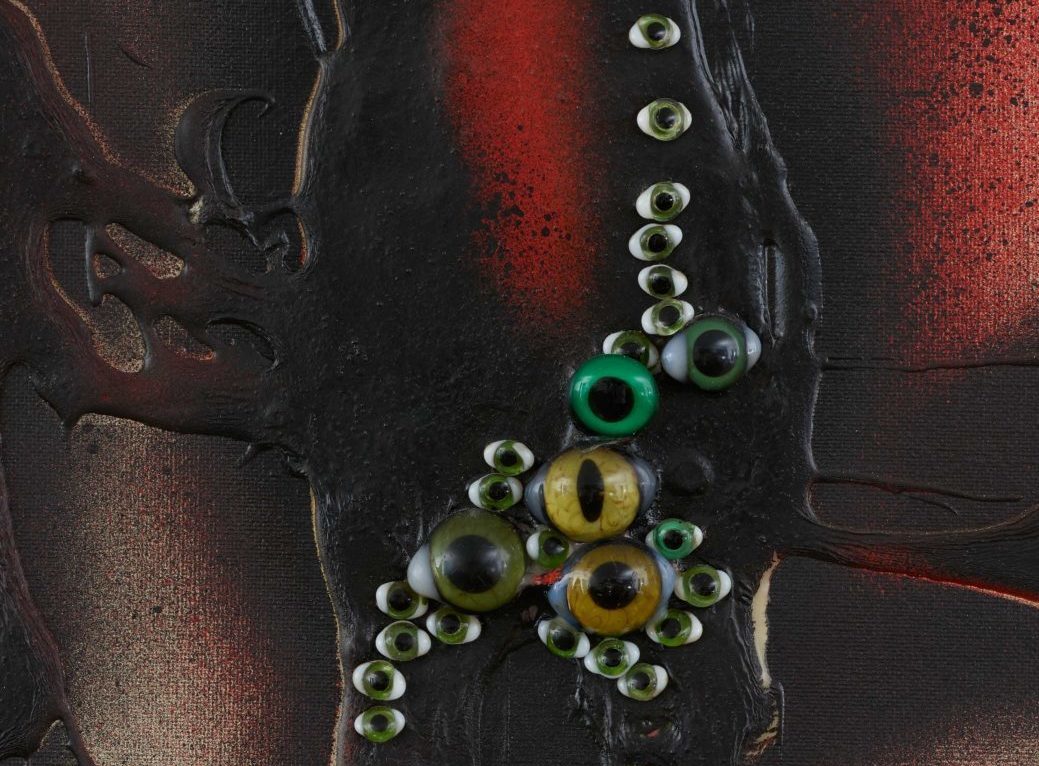Carol Rama
Senza titolo, 1969
Stainless Enamel, varnish, vinyl glue, and taxidermy eyes on canvas
39 3⁄8 x 39 3⁄8 inches (100 x 100 cm)
© Archivio Carol Rama, Torino
Photo Elisabeth Bernstein
The work of Carol Rama is a phantom limb whose sensations return in order to reclaim another history.… She returns to undo the dominant narratives, reclaiming other discourses and another time.
–Paul Preciado (credited as Beatriz Preciado), “The Phantom Limb: Carol Rama and the History of Art,” The Passion According to Carol Rama (Barcelona: Museu d’Art Contemporani, 2015), 19.
Defiantly deviant, Carol Rama’s art is animated by raw, maverick energy. Alternately described as “sensurrealism,” “organic abstraction,” and “porn brut,” it moves between inspiration and madness, exulting in states of abjection and obsession. Inextricable from her womanhood, Rama’s oeuvre stands out in a male-dominated art world for its frank exploration of feminine and queer desires.
Rama’s work of the 1960s often revolves around the accumulation and juxtaposition of highly specific materials to achieve a strange somatic charge. Marked by its excessive, even disturbing, materiality, the present work is one of a series of enamel and vinyl glue works on canvas which depict a black, bipedal form with a dangling phallus, often adorned with glass eyes used in doll making or taxidermy. The artist had a predilection for black hues: “Black is the color that will help me to die. I’d like to paint everything black, it’s a kind of incineration, a kind of wonderful agony.” The viscous drips and daubs that constitute the decidedly male figure riff on the machismo personas adopted by the Abstract Expressionists, while the disembodied eyes invite associations with the both the Surrealists—who treated the eye as a metaphor for a fertile, tactile form of vision—and the assemblage impulse of the postmodernists (with the goat eyes perhaps referencing Rauschenberg’s famous Monogram combine, 1955–59).
Set against the white void of a primed canvas, the figure of Senza titolo irreverently incorporates a visceral, bodily sensibility into the history of modern painting while injecting industrial and profane implications into its scope. Formally echoing the multiplicity of snakes and phalluses prevalent in her earlier practice, the present work further registers both the acuity of Rama’s attack on aesthetic propriety and the intensity of her emotional life, which she here communicates to her viewer in material form.



